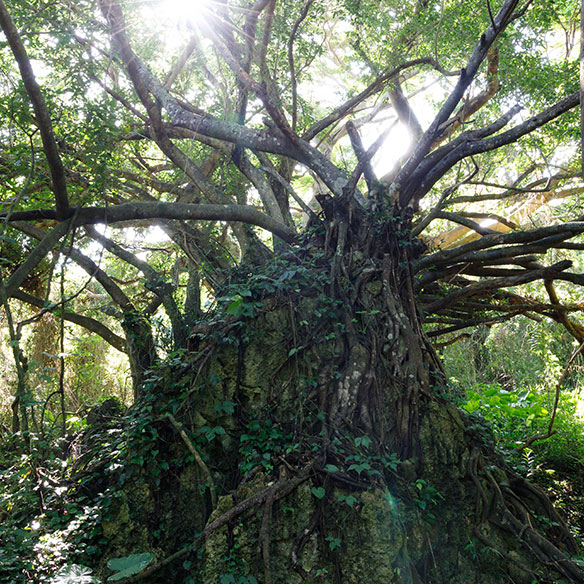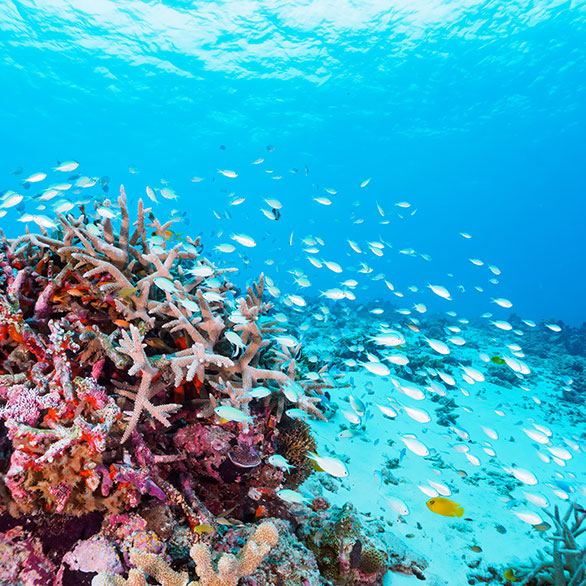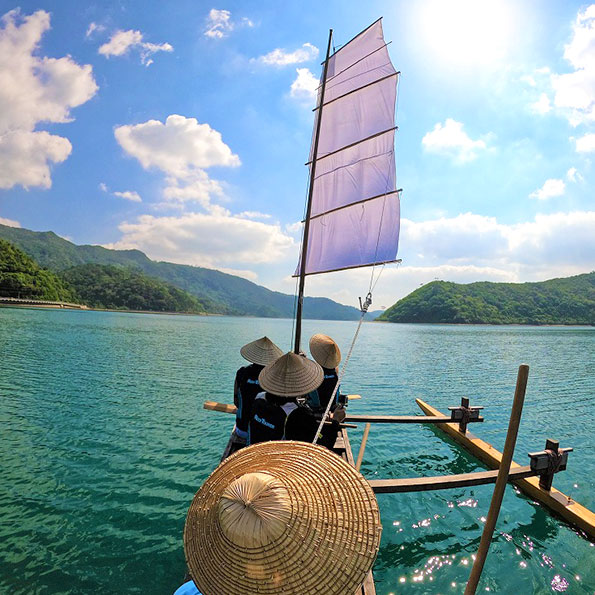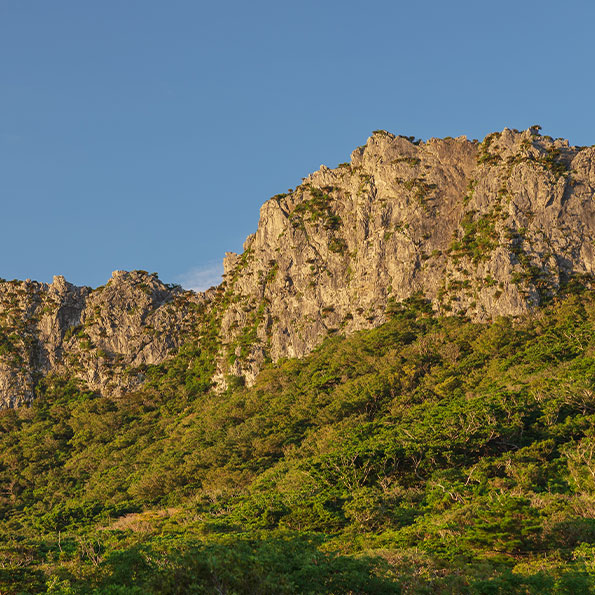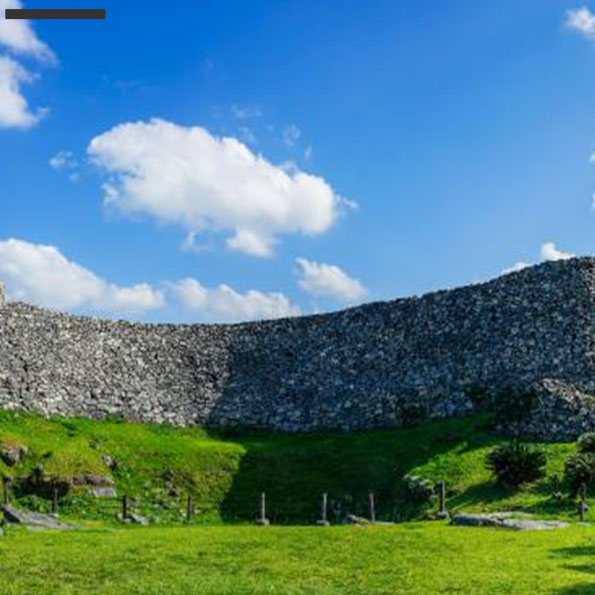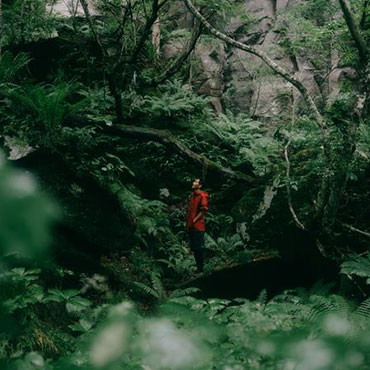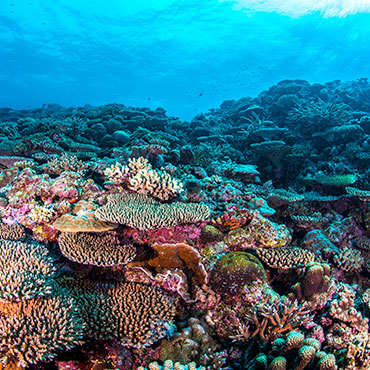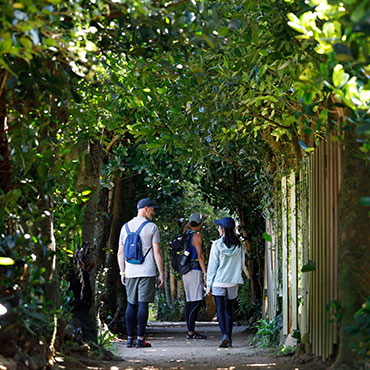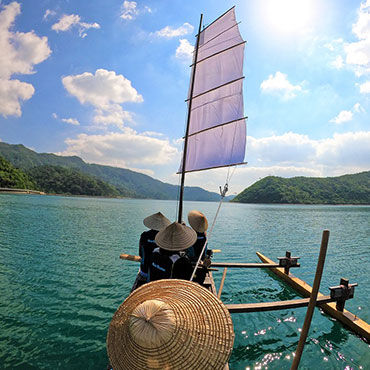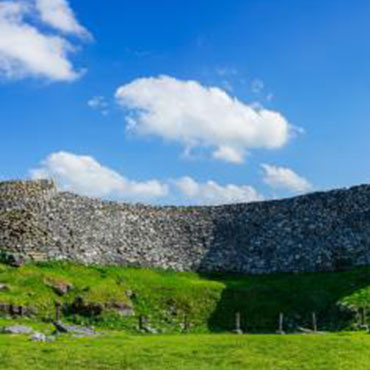DISCOVER
- Home
- About Okinawa
About Okinawa
Our tour area is the northern part of Okinawa main island.
Yanbaru forest, coral-rich sea, and unique culture dating back to the Ryukyu Kingdom era.
An adventure to fully immerse yourself in.
Secret Islands Sacred Natures
Okinawa
Okinawa, blessed with abundant nature, is located at the tip of the southwest islands of Japan.
It consists of as many as 160 islands of various sizes.
Due to the influence of the Kuroshio Current, it enjoys a warm climate, with plenty of rain throughout the year.
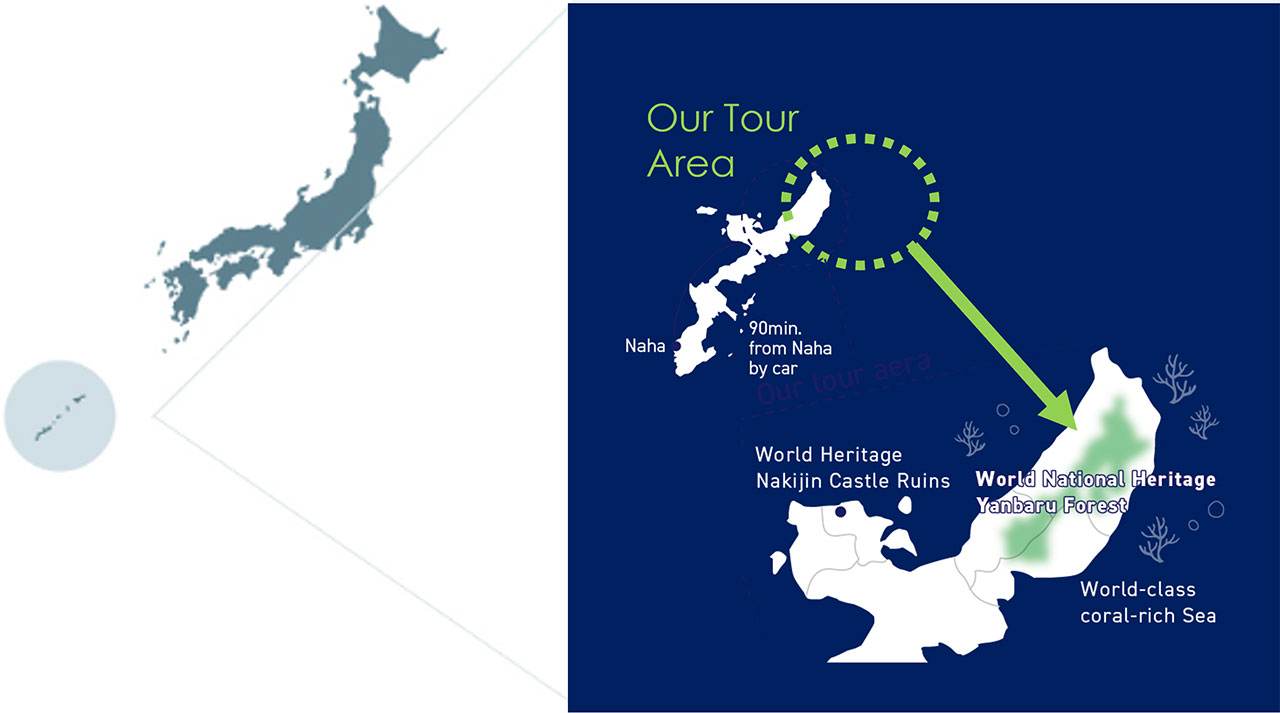
-
Flight to Naha (Okinawa)
From Tokyo to Naha 3.0hours From Osaka to Naha 2.5 hours
A Natural World Heritage Site, the forest of Yanbaru
The forest of Yanbaru is home to an ecosystem of rich diversity, including brush pot trees that have existed since a hundred million years ago, the Okinawa rail, which is an endemic species of the Yanbaru area, and many others.
In July 2021 it was registered as a UNESCO Natural World Heritage Site, one of just five across Japan.
The forests of Yanbaru have been an essential part of people's lives since ancient times. There are no mountains in the central-southern part of Okinawa Island, and from the Ryukyu Kingdom era until recent years, the forests of Yanbaru have provided all the wood for firewood, charcoal, and construction materials. Since ancient times, while enjoying the blessings of forests, people have taken care to ensure that forests last for 100 years, and have had a culture of awe and gratitude toward nature, as well as a unique worship of nature. , lived in harmony with nature.
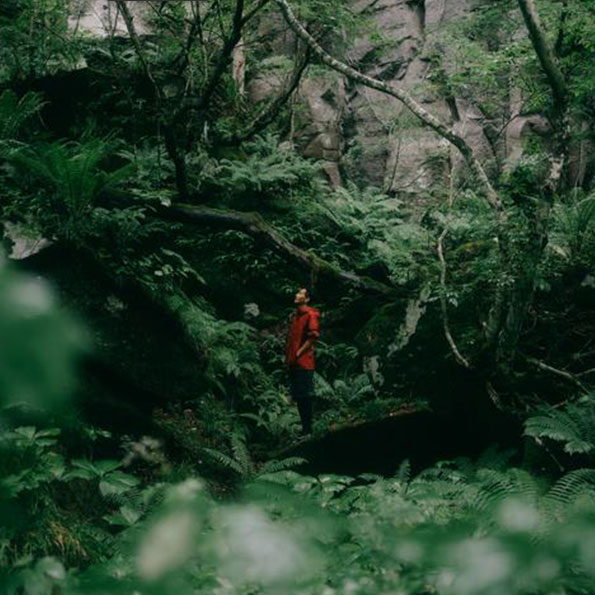
Mysterious large trees nestled in the vast Yanbaru forest.
When you see them right in front of your eyes, you will be overwhelmed by the majesty and preciousness of nature.
Rich sea full of coral
While coral populations are decreasing around the world, Okinawa is home to 400 species of coral, about half of the total number of species in the world, and new species are being discovered. Corals play an important role in the marine ecosystem, providing homes and spawning sites for various creatures. This precious sea has been preserved because of the way the local Uminchu (fisher men) lived in "harmony with the sea".
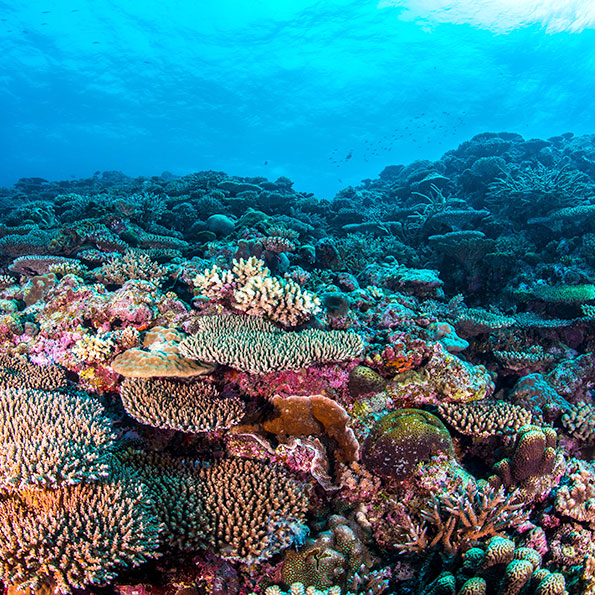
Along with the fisherman's love for the ocean, when you come face-to-face with the coral, you feel a special love.
Villages with unique natural and cultural features
The villages of the Yanbaru area are surrounded by the beautiful ocean and mountains, and the people regard themselves as a part of nature. They live each day with the appreciation of its blessings. In these villages, the unique streets and way of life are still vividly present.
The villages of Yanbaru face the ocean, with one river in the center of the area, and they are separated from other communities by mountains. The usage of the land is carefully planned, with the farmland, fuel producing areas, and places for acquiring building materials all in a concentric circle from the center of the community. Through this, protection of spring water and the natural environment was considered, and they remain unspoiled to this day. In the villages, stone walls of coral limestone and wind-blocking fukugi (happiness trees) can be seen – traditional views that were created to protect houses from typhoons and sea water damage.
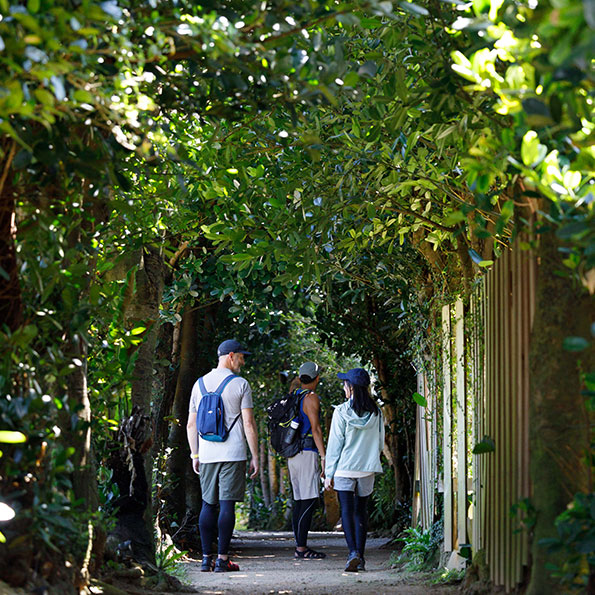
A row of Fukugi trees with a unique atmosphere.
Walk by the Fukugi trees that have protected the village and watched over people's lives, and think about living close to nature.
Sabani sailboats: inheriting the wisdom of ancestors
Sabani are boats that have been used in Okinawa and the surrounding islands since long ago.They were often used for practical purposes, such as fishing and transportation of people and cargo.
The root of these boats was dugout canoes (marukinni) made from the huge trees of the Yanbaru forest.
In the era of the Ryukyu Kingdom, the manufacturing of these dugout canoes was prohibited in order to protect the forests, so new fishing methods were developed. As a result, a new technique that employed patching together various wooden parts was invented.Wooden sabani sailboats like this were used widely until the 1950s in many areas, but with the introduction of engines, sailboats decreased in number. Additionally, as FRP (Fiber Reinforced Plastic) appeared, the production of wooden boats gradually drew to a halt.
The number of shipbuilders also declined, and a dwindling number of people maintained the skills required to control a boat with a sail.The wooden sabani sailboat was close to extinction, but in 2000, the “1st Sabani Sailing Race” event was held, and it generated many sabani lovers. Today, local craftsmen work hard to hand down the building skills.
Utaki: sacred places for worship since ancient days
“Utaki” in Okinawa refers to all sacred sites, such as forests (mui), castles (gusuku), and prayer houses (ugan-ju), and these are said to be spots where the gods come down. They are special places for the religious ceremonies of Ryukyu Shinto, and holy sites.
Ryukyu Shinto is a religion that has been retained from the ancient Ryukyu Kingdom, and it is a form of nature worship with no representation of god. The religion has features of animism, and in Okinawa natural phenomena such as spiritual stones (hijuru) and mountains are worshipped as utaki. Kami-ugami (“god prayer”) is a traditional pilgrimage around Okinawa, taking place in January, May, and September of the old lunar calendar. At these times, it is considered proper to be moderate and refrain from certain activities.
In ancient times, in the Ryukyu Kingdom, this pilgrimage to utaki was a sacred parade, led by a noro (priestess).
Cultural World Heritage "Gusuku of the Ryukyu Kingdom"
Nakijin Castle Ruins was registered as a UNESCO World Heritage Site (Cultural Category) as “Gusuku Sites and Related Properties of the Kingdom of Ryukyu” in 2000. Although the origin of this castle site is unclear, it is thought to date back to ancient history and have been built as far back as the 13th century.
In the past, the main island of Okinawa was governed in three domains: Hokuzan in the north, Chuzan in the center, and Nanzan in the south, with kings in each area.
The king of Hokuzan constructed Shuri-jo(castle) before the formation of the Ryukyu Kingdom in the 15th century. The Hokuzan kings mainly governed the northern area, and also conducted trade with China, but in 1416, the Chuzan king Shō Hashi took over this domain, and from 1422 onwards Nakijin Castle Ruins was used as a residence for the watchmen dispatched by the government of the Ryukyu Kingdom. Nakijin Castle Ruins spreads over a huge area of eight hectares – similar in size to Shuri-jô. The castle wall utilizes the geographical features well in its curved line, stretching over 1.5km with a majesty that reminds one of the Great Wall of China. The walls are thought to have been built under the influence of communication with China, unlike the castle walls commonly seen in Japan, but the details remain unknown.
GALLARY
Adventure tourism attracting attention around the world
Bringing inner change – the ultimate travel experience
Immerse yourself in the local culture through interactive activities and nature experiences.More and more people are looking for more meaningful ways to spend their vacations, beyond just luxury.It is becoming increasingly popular around the world, especially among wealthy people in Europe, America, and Australia.
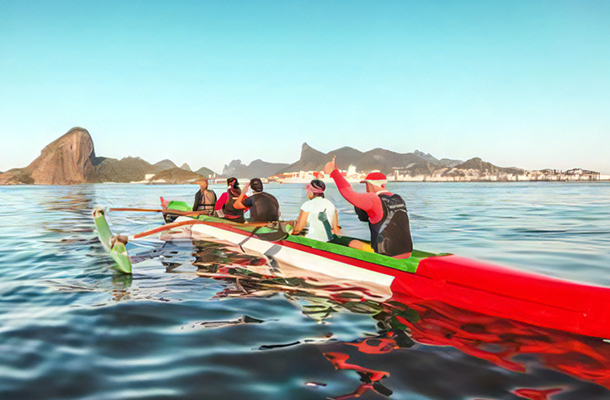
Traveler Experience of Adventure
-
01THE NOVEL AND UNIQUENESS
To have an experience that cannot be had anywhere else and is unique to that location.
-
02TRANSFORMATION
Feel your growth and change.
-
03WELLNESS
Gain a sense of better physical and mental health than before the trip.
-
04CHALLENGE
Elements of physical and psychological challenge must be included in the experience.
-
05LOW IMPACT
Minimum impact on the culture and natural environment.

